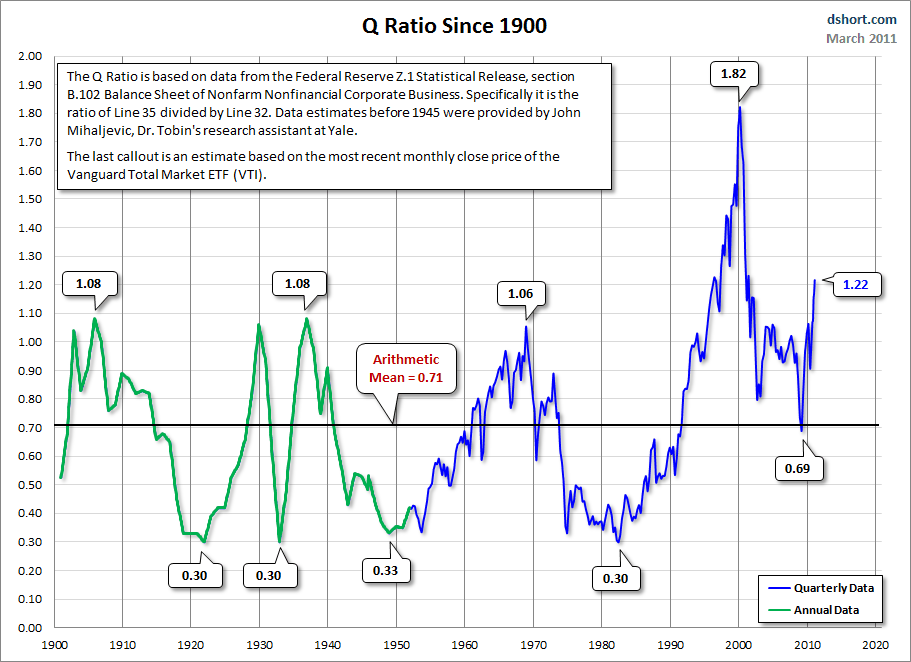Both ratios show that conditions in the US stock market are getting frothy.
Shiller’s ratio is the same as the one created by Benjamin Graham and David Dodd in 1934. It is self-explanatory. If we ignore the outrageous peak in the Technology, Media, and Telecom (TMT) bubble of 2000, we can see that the P / 10-Year Earnings Ratio is approaching the level of prior peaks in 1929, 1937 and 1966, and that it has already surpassed the peak of 1906. In each case, equity returns after those peaks were less than satisfactory (Source for Shiller data: http://www.econ.yale.edu/~shiller/data.htm). 
After economic conditions, perhaps the most important factor affecting the multiple is investor psychology. Investors were ebullient over the “new” economy in the late 1990s and were willing to pay more for each dollar of earnings than ever before. They bid equity price multiples up to astronomical levels. The moods after 1906, 1929, 1937, and 1966 were less sanguine; so much so that they were given proper names: The “Panic of 1907,” the “Great Depression,” and the “1970s Malaise.”
The moods then were perhaps very similar to today’s mood as most individuals and governments in the aging, developed world (US, Europe, Japan) wonder how they are going to get out from under massive debts. Professor Jeremy Siegal from Wharton thinks he knows the answer: we in the aging, developed world are going to sell all of our assets to the people from the young, developing world.
Tobin’s Q ratio measures the market value of all public companies relative to what it would cost to replace the assets of those companies. It is already significantly higher than all prior peaks except the 2000 TMT Bubble (Source for Tobin chart: www.dshort.com).
So, are you willing to bet that this time is different? If so, what are the factors that allow you to believe that? What makes you believe that the earnings of US companies will rise significantly in the next several years?
As all value investors know, valuation matters.

